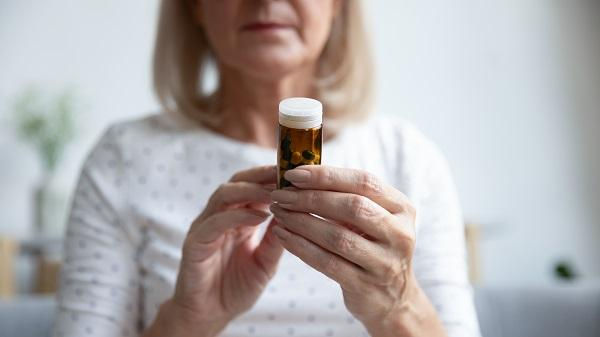Platelet Aggregation: A Hidden Culprit in the Battle Against COVID-19
- Bio/Data Blogger
- Mar 5, 2024
- 4 min read

In the battle against COVID-19, scientists and medical experts have been uncovering various factors that contribute to the severity of the illness. While much attention has been focused on the respiratory system, a hidden culprit may be playing a significant role in disease progression: platelet aggregation. Platelets, tiny cell fragments in our blood, typically play a crucial role in clotting to prevent excessive bleeding. However, recent studies have found that in COVID-19 patients, platelet aggregation goes into overdrive, leading to an increased risk of blood clots. These blood clots can have serious consequences, such as pulmonary embolism or stroke, which can further worsen the condition of COVID-19 patients. Understanding the role of platelet aggregation in COVID-19 could potentially open up new avenues for treatment and therapies that target this process. By addressing platelet aggregation, medical professionals may be able to improve outcomes and reduce the severity of COVID-19.
Role of Platelet Aggregation in COVID-19
Platelet aggregation, the process of platelets clumping together, is a normal and essential part of hemostasis and the body's response to injury or trauma. However, in the context of COVID-19, abnormal platelet aggregation has been observed. Researchers have found that the SARS-CoV-2 virus, which causes COVID-19, can directly activate platelets, triggering their aggregation. This excessive platelet aggregation can lead to the formation of blood clots, which can obstruct blood flow, damage organs, and contribute to disease severity.
Mechanism of Platelet Aggregation
Platelet aggregation is a complex process that involves various molecular and cellular interactions. When platelets encounter a damaged blood vessel or an activated endothelium, they undergo a series of changes. They release chemical signals, such as adenosine diphosphate (ADP) and Thromboxane A2, which attract other platelets to the site of injury. The activated platelets then bind to fibrinogen, forming bridges between platelets and causing them to aggregate. This process ultimately leads to the formation of a clot.
Platelet Aggregation and Inflammation
In addition to its role in blood clotting, platelet aggregation is closely linked to inflammation. In COVID-19 patients, the virus can trigger an excessive immune response, resulting in a heightened inflammatory state known as a cytokine storm. This inflammation can further activate platelets, leading to increased platelet aggregation. The release of pro-inflammatory molecules by activated platelets can exacerbate the inflammatory response, creating a vicious cycle that contributes to disease progression.
Platelet Aggregation and Hemostasis
Hemostasis is a vital process that prevents excessive bleeding, but it can become problematic when it occurs inappropriately or excessively. COVID-19 has been associated with an increased risk of blood clots, both in the veins (venous thrombosis) and the arteries (arterial thrombosis). Platelet aggregation plays a significant role in the formation of these clots. When platelets aggregate excessively, they contribute to the formation of a fibrin mesh, which stabilizes the clot. These clots can then travel to different parts of the body, leading to potentially life-threatening complications.
Impact of Platelet Aggregation on COVID-19 Severity
The role of platelet aggregation in COVID-19 severity has significant implications for patient outcomes. Studies have shown that COVID-19 patients with higher levels of platelet aggregation markers tend to have more severe disease and a higher risk of complications. Blood clots resulting from platelet aggregation can lead to pulmonary embolism, stroke, heart attack, or other organ damage. By understanding and addressing platelet aggregation, medical professionals may be able to intervene earlier and prevent or reduce the severity of these complications.
Strategies to Prevent Platelet Aggregation in COVID-19 Patients
Given the potential impact of platelet aggregation on COVID-19 outcomes, strategies to prevent or reduce excessive platelet aggregation are being explored. One approach is the use of antiplatelet drugs, such as aspirin and clopidogrel, which can inhibit platelet activation and aggregation. However, the efficacy and safety of these drugs in COVID-19 patients are still being studied. Other potential strategies include targeting specific molecules involved in platelet activation or exploring the use of existing anticoagulant drugs to prevent blood clot formation.
Platelet Aggregation Inhibitors as Potential Treatments for COVID-19
In addition to their role in preventing platelet aggregation, platelet aggregation inhibitors, such as certain antiplatelet drugs, are being investigated as potential treatments for COVID-19. These drugs may not only help prevent the formation of blood clots but also modulate the inflammatory response associated with platelet activation. Clinical trials are currently underway to evaluate the safety and efficacy of these inhibitors in COVID-19 patients.
Platelet Aggregation Testing in COVID-19 Diagnosis and Prognosis
Platelet aggregation testing can play a crucial role in COVID-19 diagnosis and prognosis. Monitoring platelet aggregation markers in COVID-19 patients may help identify individuals at higher risk of developing severe disease or complications. It could also help guide treatment decisions, such as the use of antiplatelet drugs or specific therapies targeting platelet aggregation. However, further research is needed to establish the clinical utility and reliability of platelet aggregation testing in the context of COVID-19.
Conclusion: The Importance of Understanding Platelet Aggregation in the Fight Against COVID-19
Platelet aggregation, a process typically involved in clotting to prevent excessive bleeding, has emerged as a hidden culprit in the battle against COVID-19. Excessive platelet aggregation in COVID-19 patients can lead to the formation of blood clots, contributing to disease severity and complications. Understanding the mechanisms and impact of platelet aggregation in COVID-19 is essential for developing targeted treatments and interventions. By addressing platelet aggregation, medical professionals may be able to improve patient outcomes and reduce the severity of COVID-19. Continued research in this area is crucial for optimizing the management of COVID-19 and improving the overall prognosis for affected individuals.




Comments